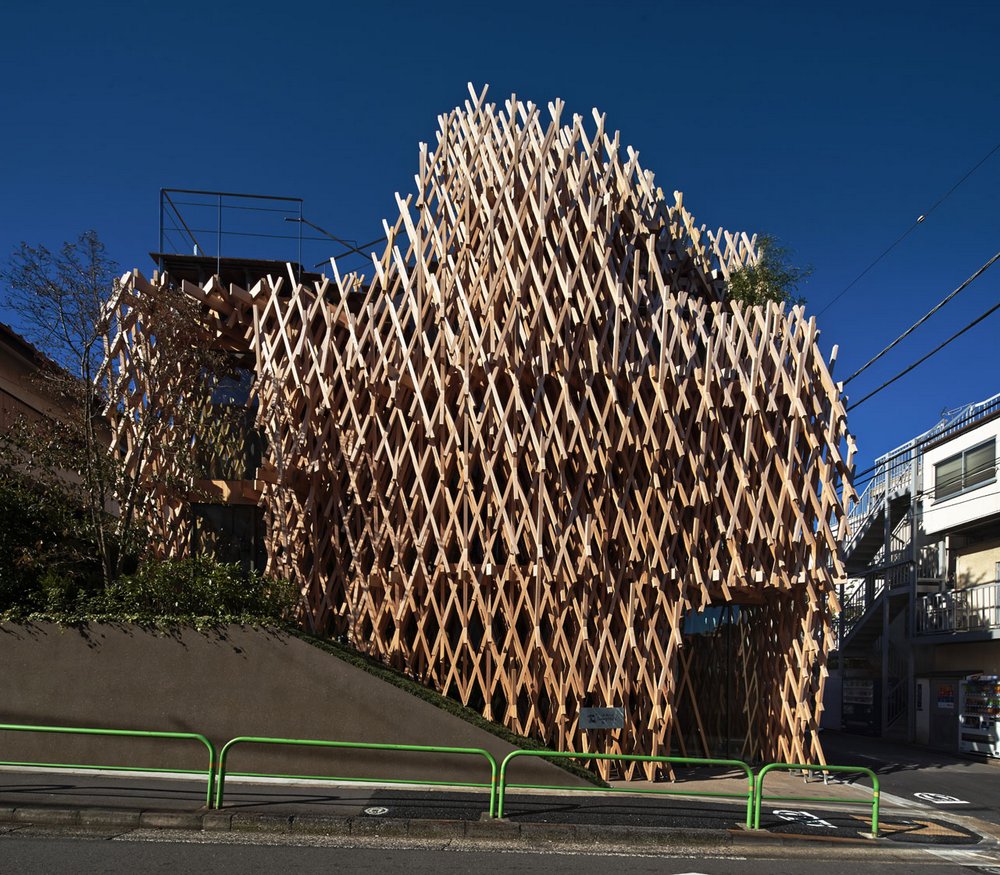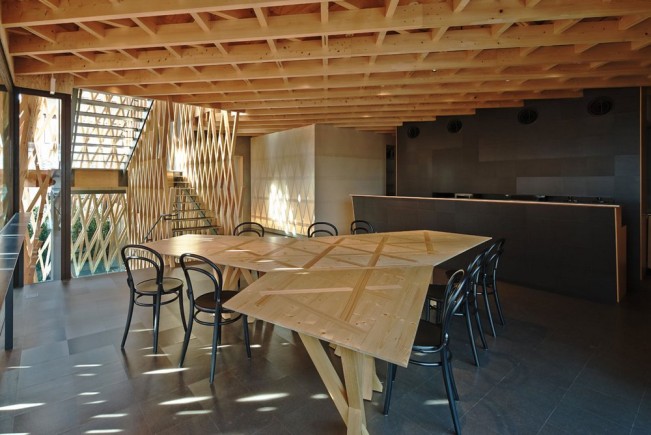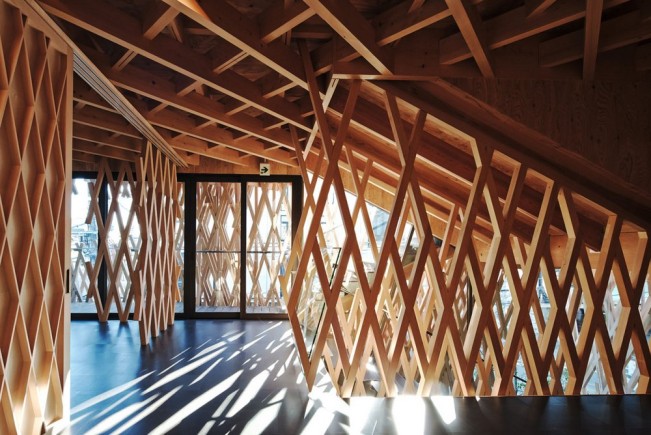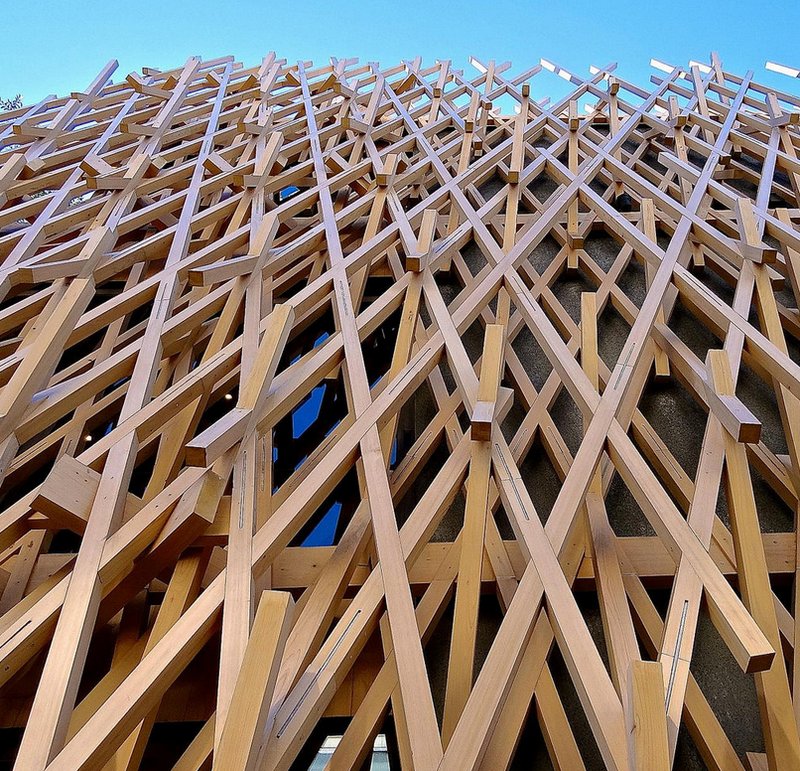In Japan there is an ancient craft passed down between woodworkers and artisans known as jigoku-gumi. Literally, “interlocking hell,” the complex technique can be observed, on a smaller scale, in the wooden frames of shoji screens. The fear-inducing name seems to have been derived not only from the complexity and difficulty of the craft, but also because it is near-impossible to disassemble once complete. In fact, jigoku-gumi was used to create the 635-year old shoji screens in Kyoto’s Toji Mieido temple (renovated in 1380), as well as the 815-year old fusuma sliding doors in Wakayama’s Kongōbu-ji temple. In other words, jigoku-gumi is not meant to be taken halfheartedly.
But reviving the technique, and taking it to awe-inspiring heights, is the architect Kengo Kuma, who just completed SunnyHills in the posh neighborhood of Minami-Aoyama, Tokyo. Nestled amongst designer boutiques like Herzog & De Meuron’s Prada building and the Nezu Museum, designed by Kuma himself, the bold structure of entwined wood feels right at home.
http://www.spoon-tamago.com/2014/02/19/the-hellish-art-of-japanese-interlocking-wooden-architecture-revived-at-sunnyhills-minami-aoyama/




